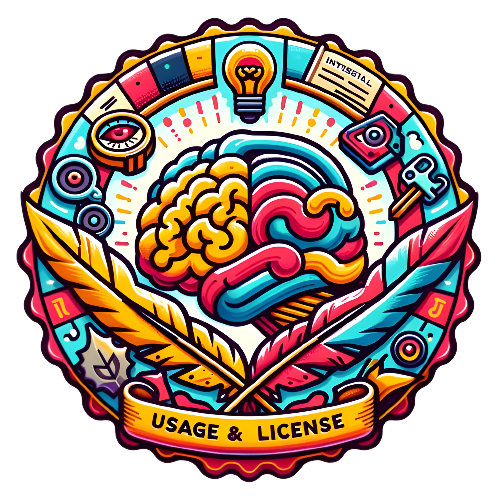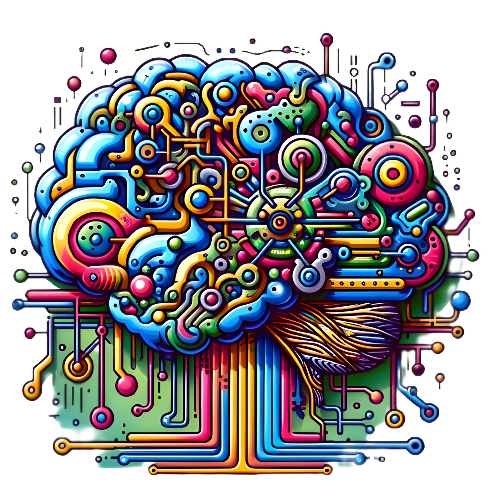File size: 13,302 Bytes
dfde229 4323c95 dfde229 2cf5628 dfde229 336f6b2 862168c dfde229 862168c dfde229 862168c dfde229 10d424a dfde229 89b7083 52ddbc7 dfde229 |
1 2 3 4 5 6 7 8 9 10 11 12 13 14 15 16 17 18 19 20 21 22 23 24 25 26 27 28 29 30 31 32 33 34 35 36 37 38 39 40 41 42 43 44 45 46 47 48 49 50 51 52 53 54 55 56 57 58 59 60 61 62 63 64 65 66 67 68 69 70 71 72 73 74 75 76 77 78 79 80 81 82 83 84 85 86 87 88 89 90 91 92 93 94 95 96 97 98 99 100 101 102 103 104 105 106 107 108 109 110 111 112 113 114 115 116 117 118 119 120 121 122 123 124 125 126 127 128 129 130 131 132 133 134 135 136 137 138 139 140 141 142 143 144 145 146 147 148 149 150 151 152 153 154 155 156 157 158 159 160 161 162 163 164 165 166 167 168 169 170 171 172 173 174 175 176 177 178 179 180 181 182 183 184 185 186 187 188 189 190 191 192 193 194 195 196 197 198 199 200 201 202 203 204 205 206 207 208 209 210 211 212 213 214 215 216 217 218 219 220 221 222 223 224 225 226 227 228 229 230 231 232 233 234 235 236 237 238 239 240 241 242 243 244 245 246 247 248 249 250 251 252 253 254 255 256 257 258 259 260 261 262 263 264 265 266 267 268 269 270 271 272 273 274 275 276 277 278 279 280 281 282 283 284 285 286 287 288 289 290 291 292 293 294 295 296 297 298 299 300 301 302 303 304 305 306 307 308 309 310 311 312 313 314 315 316 317 318 319 320 321 322 323 324 325 326 327 328 329 330 331 332 333 334 335 336 337 338 339 340 341 342 343 344 345 346 347 348 349 350 351 352 353 354 355 356 357 358 359 360 |
---
activation_function: gelu_new
architectures:
- GPT2Model
attn_pdrop: 0.1
bos_token_id: 50256
embd_pdrop: 0.1
eos_token_id: 50256
initializer_range: 0.02
layer_norm_epsilon: 0.00001
model_type: gpt2
n_ctx: 2048
n_embd: 2048
n_head: 16
n_layer: 24
n_positions: 2048
n_special: 0
predict_special_tokens: true
resid_pdrop: 0.1
summary_activation: null
summary_first_dropout: 0.1
summary_proj_to_labels: true
summary_type: cls_index
summary_use_proj: true
task_specific_params:
conversational:
max_length: 1024
min_length: 20
length_penalty: 1.5
num_beams: 5
early_stopping: true
no_repeat_ngram_size: 3
temperature: 0.7
top_k: 50
top_p: 0.9
license: apache-2.0
datasets:
- vicgalle/alpaca-gpt4
language:
- en
metrics:
- perplexity
- accuracy
custom_params:
adaptation_rate: 0.05
complexity_metric: null
desired_improvement_rate: 0.02
ecosystem_dynamics:
environmental_volatility: 0.1
resource_pool: 1
growth_improvement_threshold: 0.01
hidden_dim: 2048
initial_neuron_count: 5000
innovative_growth_net:
adaptation_rate: 0.05
complexity_metric: null
initial_capacity: 250000
input_size: 2048
input_dimension: 2048
low_stability_threshold: 0.01
max_complexity: 50000
max_neurons: 250000
max_sequence_length: 2048
min_epochs_before_growth: 5
model_filename: tf_model.h5
num_embeddings: 100000
pruning_improvement_threshold: 0.005
some_adaptation_rate: 0.05
stability_threshold: 0.02
start_token_index: 2
max_input_length: 2048
max_total_tokens: 2051
max_concurrent_requests: 128
max_best_of: 2
max_stop_sequences: 4
max_top_n_tokens: 5
waiting_served_ratio: 1.2
max_batch_prefill_tokens: 2048
max_waiting_tokens: 200
widget:
- title: Basic Conversation
text: Hello, how are you today?
description: >-
Demonstrates the model's ability to engage in basic conversational
exchanges.
- title: Complex Inquiry
text: What are the implications of quantum computing on encryption technologies?
description: >-
Showcases the model's capacity to understand and generate responses to
complex topics.
- title: Creative Storytelling
text: >-
Once upon a time, in a world far beyond the clouds, there lived a wise old
owl.
description: >-
Highlights the model's creative storytelling abilities, generating
imaginative narratives.
- title: Technical Explanation
text: Can you explain the concept of reinforcement learning?
description: >-
Illustrates the model's ability to break down and explain technical concepts
in an accessible manner.
- title: Emotionally-aware Response
text: I'm feeling a bit down today. Could use some words of encouragement.
description: >-
Demonstrates the model's capability to recognize emotional cues and respond
with appropriate empathy.
- title: Language Understanding
text: What's the difference between affect and effect?
description: >-
Shows the model's understanding of nuanced language differences and ability
to explain them.
- title: Cultural Knowledge
text: Tell me about the tradition of tea ceremony in Japan.
description: >-
Displays the model's grasp of cultural knowledge and its ability to share
informative content.
- title: Personalized Recommendations
text: I'm looking for book recommendations in the sci-fi genre.
description: >-
Exemplifies the model's ability to provide personalized recommendations
based on specific queries.
pipeline_tag: text-generation
---
---
## Phillnet Large 🚀

🚀 Welcome to **Phillnet11b** 🌟
Dive into the depths of AI with Phillnet, your 11 Billion-parameter titan! This colossal model is not just numbers; it's a labyrinth of knowledge, ready to unlock new realms of possibilities. 🧠💡
From text generation to complex problem-solving, Phillnet11b is your gateway to unparalleled AI power. Get ready to embark on a journey where every parameter is a pathway to innovation. 🌍✨
Let's revolutionize the world with **Phillnet5b** - where every bit counts and every neuron fires towards the future! 🚀🔮
---
## Usage and License

If you intend to use this AI model, I kindly request that you provide appropriate credit to the original author (Phillip Holland) as a gesture of acknowledgment for his effort in developing and sharing this model.
**Please adhere to the following guidelines:**
1. **Give Credit:** When you use this AI model, include a visible and prominent credit to the original author (Phillip Holland) in your project, research paper, or application. You can use the following format:
2. **Review the License:** Carefully read and comply with the terms of the accompanying license (LISCENSE.md). The license outlines the permissions and restrictions for using this AI model. Make sure you understand and adhere to its provisions.
By using this AI model, you acknowledge that you have read and agreed to the terms and conditions set forth in the license.
Thank you for your understanding and cooperation. Together, we can foster responsible and ethical AI development and usage.
---
## Model Overview

Phillnet, a marvel in the realm of language models, is a cutting-edge Dynamic Neural Network designed for advanced natural language processing tasks. Breaking away from conventional models, Phillnet exhibits dynamic adaptation and continuous evolution, showcasing its prowess in continual improvement. Crafted with a custom architecture, Phillnet seamlessly integrates an Innovative Growth Network, ushering in adaptability and innovation.
## Key Features
- **Model Type:** Dynamic Neural Network 🧠
- **Embedding Dimension:** 2048
- **Hidden Dimension:** 2048
- **Initial Neuron Count:** 5000
- **Input Dimension:** 2048
- **Max Neurons:** 250000
- **Max Sequence Length:** 2048
- **Num Embeddings:** 100000
- **Model Filename:** pytorch_model.bin
- **Transformers Version:** 4.34.0
## Ecosystem Dynamics 🌐
Phillnet thrives in a dynamic ecosystem:
- **Environmental Volatility:** 0.1
- **Resource Pool:** 1.0
## Innovative Growth Network 🌱
Empowered by an Innovative Growth Network for dynamic adaptation:
- **Adaptation Rate:** 0.05
- **Initial Capacity:** 250000
- **Input Size:** 2048
---
## Hyperparameters Overview

Here's a concise overview of the key hyperparameters used for training the model:
**Training Parameters**
- `max_neurons`: 250,000
- `epochs`: 50
- `clip`: 5
- `patience`: 7
- `adaptation_rate`: 0.05
- `sequence_length`: 2048
- `max_sequence_length`: 2048
- `weight_decay`: 0.005
- `num_embeddings`: 100,000
- `embedding_dim`: 2048
- `hidden_dim`: 2048
- `learning_rate`: 1e-5
- `some_intermediate_size`: 2048
**Additional Parameters**
- `input_dimension`: 2048
- `initial_neuron_count`: 5000
- `some_adaptation_rate`: 0.05
- `complexity_metric`: None
**New Parameters**
- `growth_improvement_threshold`: 0.01
- `pruning_improvement_threshold`: 0.005
- `stability_threshold`: 0.02
- `max_complexity`: 10,000
- `low_stability_threshold`: 0.01
- `min_epochs_before_growth`: 5
- `desired_improvement_rate`: 0.02
---
## Seamless Integration with Hugging Face 🤗

from transformers import AutoTokenizer, AutoModelForCausalLM
tokenizer = AutoTokenizer.from_pretrained("ayjays132/PhillnetLarge")
tokenizer.add_special_tokens({'pad_token': '[PAD]'})
model = AutoModelForCausalLM.from_pretrained("ayjays132/PhillnetLarge")
# Example conversation
conversation_history = [
"Hello, how are you?",
"I'm doing well, thank you! How about you?",
"I'm good too. What's new with you?",
"Not much, just working on some projects. How can I help you today?"
]
# Concatenate the conversation strings
conversation_text = " ".join(conversation_history)
# Tokenize and pad the input
input_ids = tokenizer.encode(conversation_text, return_tensors="pt", padding=True, truncation=True)
# Generate a response
output_ids = model.generate(input_ids, max_length=150, num_return_sequences=1, pad_token_id=tokenizer.eos_token_id)
# Decode the generated response
generated_response = tokenizer.decode(output_ids[0], skip_special_tokens=True)
# Print the generated response
print("Generated Response:", generated_response)
## Experience the Magic ✨
- **Adaptive Learning:** Phillnet dynamically adapts to data patterns, continually enhancing its performance.
- **Innovative Growth:** The model evolves through an Innovative Growth Network, ensuring continuous enhancement.
- **Custom Architecture:** Crafted with a dynamic custom architecture for unparalleled language understanding.
🌐 **Welcome to the CustomModelLoader.py Odyssey!** 🌟
Embark on a scholarly quest to unlock the potential of your AI model, "ayjays132/phillnet", with our elegantly crafted script. Designed for the curious minds in AI, this guide is your beacon through the realm of machine learning. Let's dive into the script that's set to revolutionize your AI journey! 🚀
### The Script Unveiled: CustomModelLoader.py
This script is your trusty companion in the AI landscape, designed to effortlessly awaken your pre-trained model from its slumber in the Hugging Face Hub. Here's a peek into its core:
```
# CustomModelLoader.py
import torch
from transformers import AutoTokenizer, AutoModelForCausalLM
import logging
# Set up logging
logging.basicConfig(level=logging.INFO)
logger = logging.getLogger(__name__)
def load_custom_model(model_name, device):
try:
# Load the model directly from Hugging Face Hub
model = AutoModelForCausalLM.from_pretrained(model_name).to(device)
logger.info(f"Model loaded successfully from {model_name}")
return model
except Exception as e:
logger.error(f"An error occurred while loading the model: {e}")
raise
def load_tokenizer(tokenizer_name):
try:
# Load the tokenizer
tokenizer = AutoTokenizer.from_pretrained(tokenizer_name)
logger.info(f"Tokenizer loaded successfully from {tokenizer_name}")
return tokenizer
except Exception as e:
logger.error(f"An error occurred while loading the tokenizer: {e}")
raise
def inspect_model_layers(model):
logger.info("Inspecting model layers and weights...")
for name, param in model.named_parameters():
logger.debug(f"Layer: {name} | Size: {param.size()} | Values : {param[:2]}...\n")
if __name__ == "__main__":
# Define device
device = torch.device("cuda" if torch.cuda.is_available() else "cpu")
logger.info(f"Using {'CUDA' if device.type == 'cuda' else 'CPU'}")
# Model name or path in Hugging Face Hub
model_name = "ayjays132/PhillnetLarge"
tokenizer_name = model_name # Assuming tokenizer is at the same path
try:
# Load the tokenizer and model
tokenizer = load_tokenizer(tokenizer_name)
model = load_custom_model(model_name, device)
# Inspect the model layers and weights
inspect_model_layers(model)
# Perform a simple test to verify model weights are loaded correctly (Optional)
input_ids = tokenizer.encode("Hello, world!", return_tensors="pt").to(device)
with torch.no_grad():
outputs = model(input_ids)
logger.info("Model test run completed successfully.")
print("Custom model and tokenizer loaded successfully.")
except Exception as e:
logger.error(f"An error occurred: {e}")
```
### With `CustomModelLoader.py` at your side, you're not just loading a model; you're unlocking a world of possibilities. Whether you're fine-tuning for accuracy or predicting the unknown, your AI journey is about to get a whole lot smoother. So, scholars and AI enthusiasts, let the odyssey begin! 🎩✨
### 🛠 How It Works: The Mechanics
1. **Setting the Stage**: Our script begins by checking whether to summon the powers of CUDA or settle in the CPU realm.
2. **Summoning the Model & Tokenizer**: It then gracefully calls upon the `AutoModelForCausalLM` and `AutoTokenizer` from the Hugging Face Hub, ensuring your model and tokenizer are at the ready.
3. **Error Handling Like a Pro**: Should any mischiefs arise, our script is well-armed with try-except blocks to catch and log any spells gone awry, keeping you informed every step of the way.
### 🎓 For the AI Scholars:
This script isn't just a tool; it's a companion designed to make your AI endeavors more productive and enjoyable. Here's how you can harness its power:
- **Plug & Play**: Simply place this script in your project, and it's ready to go. No complicated setup required!
- **Error Logs**: Detailed logging ensures you're always in the know, making troubleshooting a breeze.
- **Flexibility**: Designed with customization in mind, feel free to tweak the script to fit the unique needs of your scholarly pursuits.
--- |